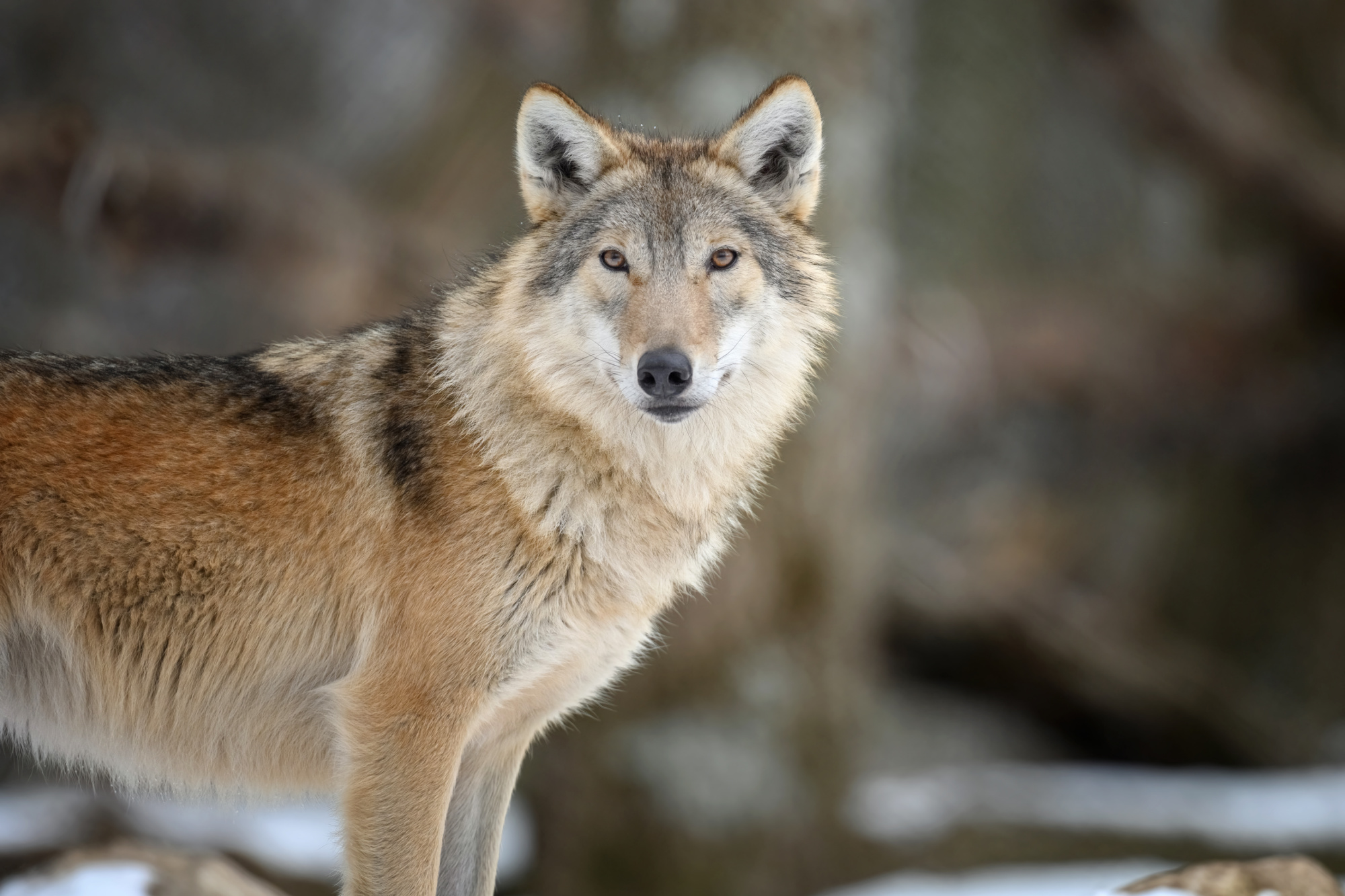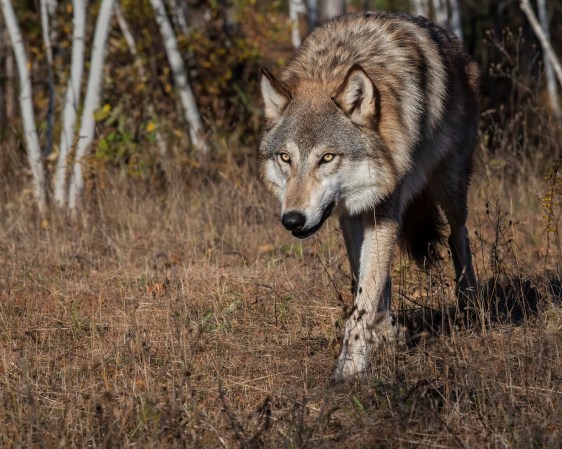Update: A Michigan hunter who mistakenly killed a gray wolf during a coyote hunt in January won’t be charged with any crimes, and neither will the hunting guide who was with him. Calhoun County prosecutor David Gilbert told Bridge Michigan on Friday that he was declining to file charges against the two hunters. Gilbert said he believed they made an honest mistake when they shot the wolf, which they said they thought was as a coyote when they initially reported the harvest.
A spokesperson with the Michigan Department of Natural Resources also confirmed with Bridge Michigan that Gilbert’s decision was consistent with what they learned during their investigation. The DNR had first become aware of the incident in January, when the hunter reported harvesting a large coyote during a legal coyote hunt in Calhoun County on Michigan’s Lower Peninsula. In April, the agency announced the results of genetic testing, which revealed that the animal was actually a gray wolf. This announcement was surprising because gray wolves, which are still classified as an endangered species in Michigan, haven’t been present on the Lower Peninsula for around 100 years, according to the DNR.
“Those involved appear to have reasonably believed they were shooting a coyote,” DNR spokesperson Ed Golder told the news outlet Friday. “The investigation revealed no information to indicate they should have expected there would be a wolf in the part of Michigan where they were hunting.”
To Golder’s point, the hunter shot the wolf near Marshall, which is only 100 miles west of Detroit and hundreds of miles south of the species’ known range on the Upper Peninsula. Gilbert pointed out that the hunters would have known this, and he said it’s understandable why they might have misidentified it.
“It’s like shooting a unicorn,” Gilbert said.
April 3, 2024. A case of false identification is under investigation in Michigan after a hunter shot, killed, and reported what he thought was a large Eastern coyote but turned out to be an 84-pound gray wolf, the Michigan Department of Natural Resources announced on Wednesday. The DNR is not indicating whether the man is under investigation or if he will be charged for the incident, which occurred in January.
This situation is especially unique since the man, whose identity is not available to the public, was on a guided coyote hunt in Calhoun County in the southern Lower Peninsula. All of Michigan’s resident wolves live in the Upper Peninsula, which is home to between 600 and 700 individuals across 120 to 130 packs, DNR wolf biologist Brian Roell tells Outdoor Life.

Eastern coyotes tend to weigh between 25 and 40 pounds, according to DNR. This animal was more than twice that size, which begs the question of how the hunter and his guide got the identification so wrong — especially after approaching it and seeing the carcass up close. When trying to determine if an animal is a wolf versus a coyote, aside from the size difference, wolves have shorter, blunter noses and rounder faces, while coyotes have much more angular features and longer, sharper snouts.
The DNR conducted genetic tests to determine the animal in question was a gray wolf. The average weight of Michigan’s adult male gray wolves is 87 pounds (adult females average 76 pounds), so this particular wolf was of average size, Roell says — although how it got to Calhoun County remains a mystery.
Read Next: Are Wolves Following Moose into Nevada? State Reports First Wolf Pack Sighting in 100 Years
“This is a one-off event. This is not a normal thing,” Roell says. “Pre-settlement times, the whole state of Michigan was wolf range. But even the southern Lower Peninsula, in the oak savannahs, those areas probably aren’t that suitable for a wolf. This is just way out of its normal range.”
But, as Roell points out, wolves are known to disperse from their packs and these travels can take them thousands of miles from their home range.
“We’ve had wolves collared in Michigan show up in Missouri years ago, and more recently one traveled over 4,000 miles through Wisconsin, Minnesota, even a little bit into North Dakota, Ontario, and west into Manitoba,” Roell says. “We’ve had wolves show up in the Lower Peninsula before, but the five-mile Straits of Mackinaw are a pretty good barrier. We don’t get a lot of ice bridges anymore. So how it got there is a curiosity, and we may never be able to say.”
Read Next: Where Northwoods Wilderness Is Lost, Wolves Kill More Fawns
The DNR’s investigation is ongoing. Gray wolves in Michigan are classified as a federally endangered species and any take of them is a crime. (They are not on the Michigan threatened and endangered species list.) But, according to U.S. Fish and Wildlife Service, someone must knowingly kill a wolf to be punished to the fullest extent. If this hunter was truly mistaken, he might avoid the combined criminal and civil penalties of $75,000 in fines and 18 months in prison that can accompany a conviction for killing a wolf.

















